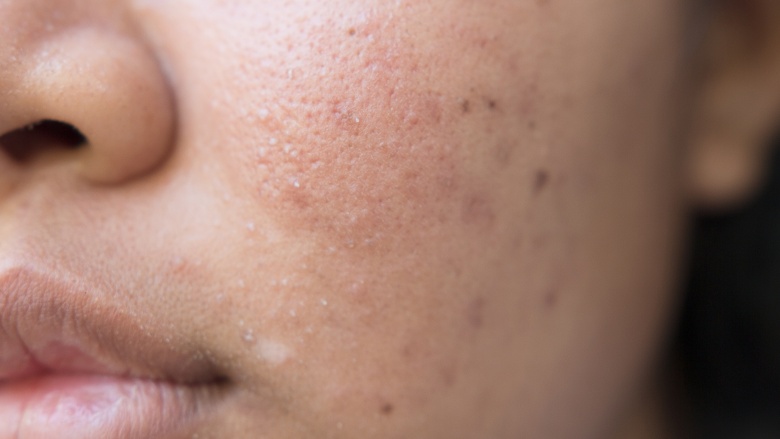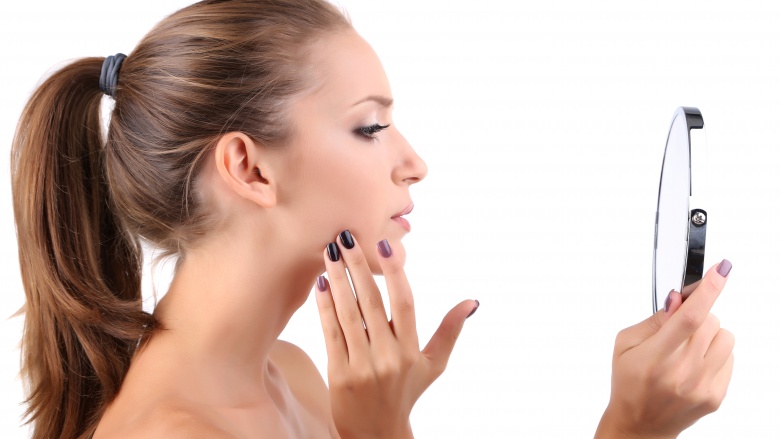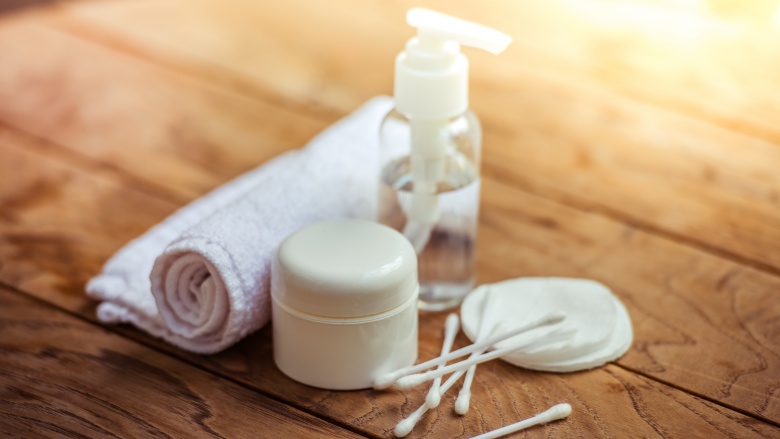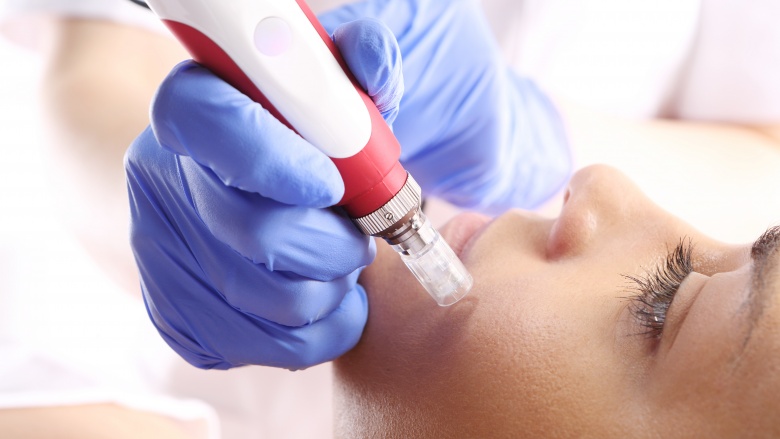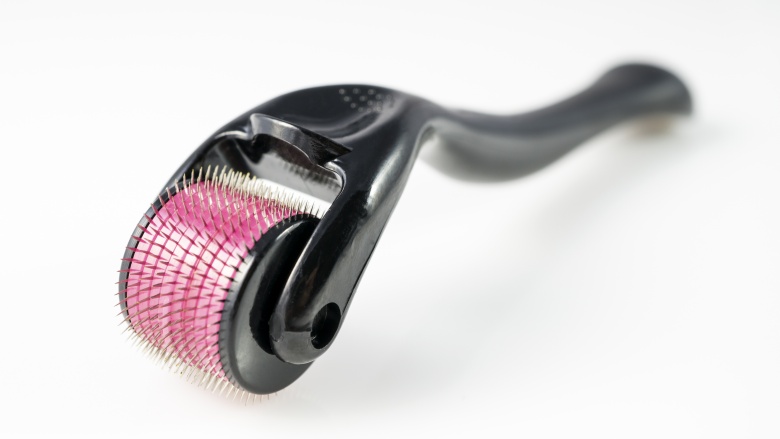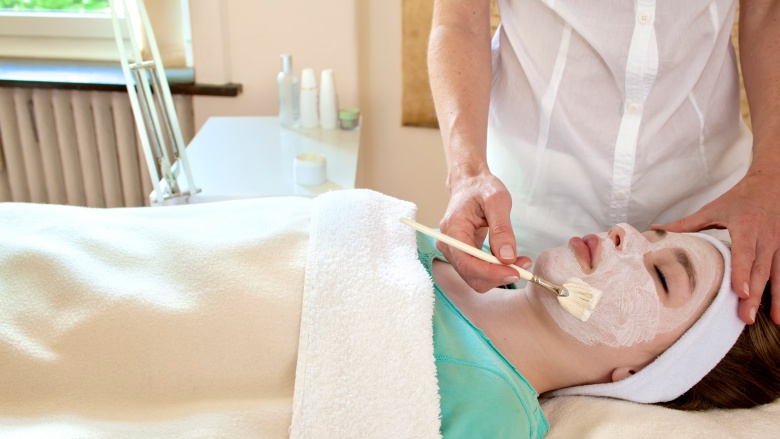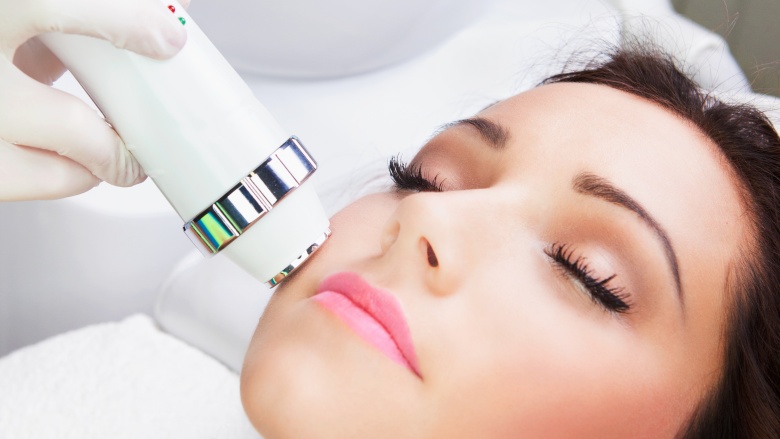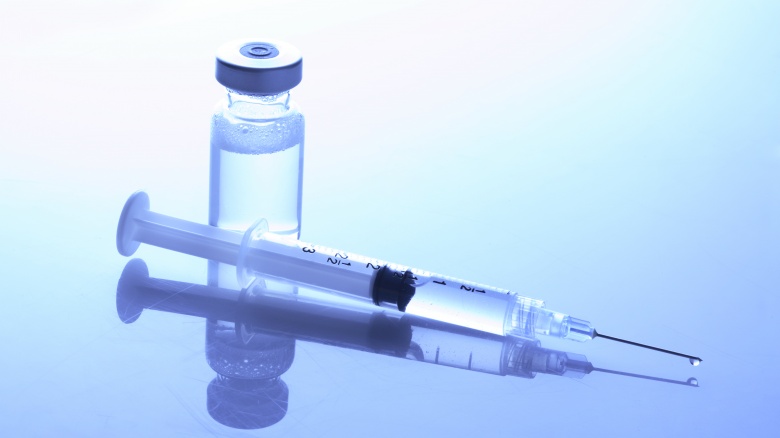How To Get Rid Of Acne Scars
Acne is not a small problem. In fact, a whopping 85 percent of people between the ages of 12 and 24 are estimated to have experienced acne at least once in their lives, and it affects up to 50 million Americans alone every single year. No matter how common the problem, though, it's still shrouded in negativity and is usually a shameful experience for those suffering through it.
Anyone who has ever experienced acne knows the effects are not just physical, but mental as well. Those who have dealt with the sever inflammation to the skin of the face, neck and shoulders know that the embarrassment can also lead to sever mental stress — and that has lasting affects.
And the worst part is, even when you think it's over, it's not. It's hard enough to clear up acne, but even when the sores are gone, you're often left with scarring that can be just as depressing. It's just one hurdle after another, right? Luckily, most of those scars don't have to be permanent. I spoke with a few skincare experts who were more than happy to share their best tips on how to send those acne scars packing, for good.
Types of acne scars
All acne scars are not created equal, according to Erica Parker, director of education and on-air celebrity aesthetician for Michael Todd Beauty. "The term 'acne scar' means something different to everyone," she said. "Some people refer to an acne scar as the post-blemish hyper-pigmented skin that stains the skin after a particularly aggressive blemish." These hyper-pigmentations are not technically scars, since they do eventually fade away, but they are none-the-less frustrating, especially for the person suffering through them.
There are four main types of acne scars.
- Icepick scars: narrow but deep divots in the skin that resemble puncture marks.
- Rolling scars: shallow but wide indentations in the skin, sometimes with a gentle, rounded appearance.
- Boxcar scars: very deep depressions in the skin with sharp edges, these may be round or square.
- Hypertrophic scars: raised acne scars that may be firm or rubbery.
When to treat acne scars
It's completely understandable that anyone suffering from acne scars would want to start steps to get rid of them right away, but that's not the best way to approach it. The first step is to clear up the acne, and then to make sure it isn't going to make a comeback.
"In my dermatology practice, I advise clients to make sure their acne is under control for at least 2 months before seeking treatment for acne scars. This ensures any inflammation in the skin caused by acne has reduced and the skin is calm and ready for scar treatment," said dermatologist and cosmetic surgeon Anjali Butani, MD. "This is also the perfect time window to start scar treatment. The skin is actively producing new collagen, trying to correct scars. The longer the scar is left untreated, the harder it is to treat."
Dr. Michael Rains, board-certified dermatologist with Westlake Dermatology, said the first step in getting acne under control is setting up a visit with a dermatologist. "A dermatologist can devise an effective acne regimen. Once the acne is under control, then there are multiple treatments, from topicals to lasers, that can be effective in reducing the appearance and severity of acne scarring," he said.
Topical treatments
Many people suffering from acne scars try to address the problem at home before taking more drastic steps with a dermatologist, and Dr. Michael Rains, board-certified dermatologist with Westlake Dermatology, said patients have had some success at this, especially with post-acne redness and hyper-pigmentation. "There are many at-home treatments that can be helpful with skin remodeling and reduction of redness," he said. "First, the post acne redness (called post-inflammatory erythema) can last longer with unprotected sun exposure; thus, the most important prevention and reduction of long lasting redness is sun protection, including sunscreen use. I typically recommend a broad spectrum sunscreen (UVA and UVB) with zinc oxide or titanium dioxide." He also recommends antioxidants (such as niacinamide) to help reduce DNA damage and inflammation that lead to redness.
"There are times that redness can be replaced with dark areas (called post-inflammatory hyper-pigmentation) that require brightening products," he added. "There are over-the-counter, safe products that include natural-based lightening ingredients, including vitamin C (ascorbic acid), vitamin A (retinol), kojic acid (derived from mushroom extract), or arbutin (bearberry extract). A dermatologist can prescribe lightening medications that include hydroquinone, if needed. However, over-use and long-term use of hydroquinone can cause paradoxical darkening of skin, so it is important to be followed closely by your dermatologist if using hydroquinone products."
Rains cautions that choosing the right products for you can be difficult. "Scar topical products are plentiful; however, it is difficult to decipher through effective topical products over the less effective products. Studies have shown sun protection in addition to silicone-based topicals or pads can enhance scar remodeling and reduce overall scar appearance."
Micro-needling
Thousands of tiny needle holes in your skin doesn't exactly sound like a walk in the park, but this process, called micro-needling, is quickly picking up steam as en effective way to treat acne scars. The procedure uses a wand-type tool with 11 very small needles at the tip. Your dermatologist can adjust the height of the needles according to your skin and scarring levels, and will use the tool to create tiny punctures in the top-most layer of your skin.
"I perform a lot of micro-needling. It's a simple concept with huge benefits," said dermatologist and cosmetic surgeon Anjali Butani, MD. "We're making thousands of microscopic fine wounds in the skin in order to induce collagen formation. Just like when you cut yourself accidentally in the kitchen sometimes, the skin is smart. It recognizes the injury and rushes nutrients and fibroblasts (new skin cells) to heal the area." These micro-needling tools are often used together with medical-grade products containing growth factors to speed healing.
Dr. Jack Zamora, MD, a Denver-based oculo-facial plastic surgeon, says micro-needling is not as painful as it sounds. "A micro-needling treatment is safe and effective for scars on the face and body. A series of five to six treatments is recommended and more may be needed depending on the area being treated and desired result. Patients are numbed prior to treatment and then the wand is passed over the treatment area several times," he said. "Most patients don't experience any discomfort. The treatment takes about an hour including numbing time. Micro-needling is ideal for all skin tones as well as those who are sensitive to heat (from laser treatments) and prone to melasma and rosacea. Downtime is minimal — patients may be red and slightly swollen post treatment but this subsides within 24-hours."
Derma roller
For the more adventurous (and very brave) acne scar sufferers, an at-home version of micro-needling is available in the form of a derma roller. A less-extreme version of in-office micro-needling, derma rollers can be ordered online and used as much as once or twice a week. Cosmetic dermatologist Dr. Kaleroy Papantoniou says their results can be positive. "The use of a derma roller for at-home micro-needling can be beneficial over the course of months and years to help reduce the appearance of pitted and depressed acne scarring," she said.
But some doctors caution against their use as they can leave you more susceptible to infections and more scarring. Speak to your doctor before you begin at-home derma rolling, and only preform the process on clean skin, with a high-quality derma roller for best results.
Chemical peels
Another popular way to deal with acne scars is through chemical peels, the method of using chemicals to remove the top layer of skin to reveal the smoother, less-scarred layer underneath.
"Chemical peels can be used for residual hyper-pigmentation, redness, or to help reduce depth of acne scars," said Dr. Michael Rains, board-certified dermatologist with Westlake Dermatology. "One technique, called the CROSS method, uses a strong concentration of trichloroactic acid (TCA) that stimulates inflammation with resulting collagen synthesis to aid with acne scarring remodeling. There is minimal downtime with small scabs that typically fall off after four to seven days. On average three to four treatments are required with treatments performed every three to six weeks."
According to the American Society for Dermatologic Surgery, there is some pain associated with chemical peels, mostly described as a short-term burning feeling during the process, followed by a less intense stinging sensation. Ice or cold compresses can sometimes help, as well as pain medication after deeper peels.
Laser therapy
Laser therapy is another effective treatment against acne scars, and is most successful with scars that are more shallow.
"Laser treatments can treat initial coloration (redness and hyper-pigmentation) and resulting scarring. One example is the V-Beam Perfecta that targets new blood vessels, which can reduce the redness appearance of remodeling scars with minimal downtime," said Dr. Michael Rains, board-certified dermatologist with Westlake Dermatology. "If the redness has faded, but there is residual scarring, then a laser that targets resurfacing is warranted to help stimulate collagen synthesis to decrease scarring appearance. There are different types of resurfacing lasers that your dermatologist can discuss with you, depending of the severity of the scarring, downtime and cost."
Soft tissue fillers
Soft tissue fillers are a fasting-acting option for filling depressed acne scars, but they're also less permanent than other options. Using this technique, fillers are injected directly into the scar, raising the surface and helping it blend in with the surrounding area.
"Soft tissue fillers can reduce the visible appearance of deep scars; however, it typically requires repeated treatments every four to eight months, as the fillers reabsorb into the skin," said Dr. Michael Rains, board-certified dermatologist with Westlake Dermatology.
Time to heal
As hard as it is to be patient, it's important to allow your skin time to recover and not expect results immediately.
"When scarring does occur, it deserves special attention because scars leave an impact both physically and emotionally for many years to come," said Dermatologist and Cosmetic Surgeon Anjali Butani, MD. "That's why I've committed a great portion of my clinical practice and skincare research to this area of dermatology. I believe with consistent, non-invasive treatments and skincare that contains cutting-edge ingredients, there is hope for the improvement of acne scars."

